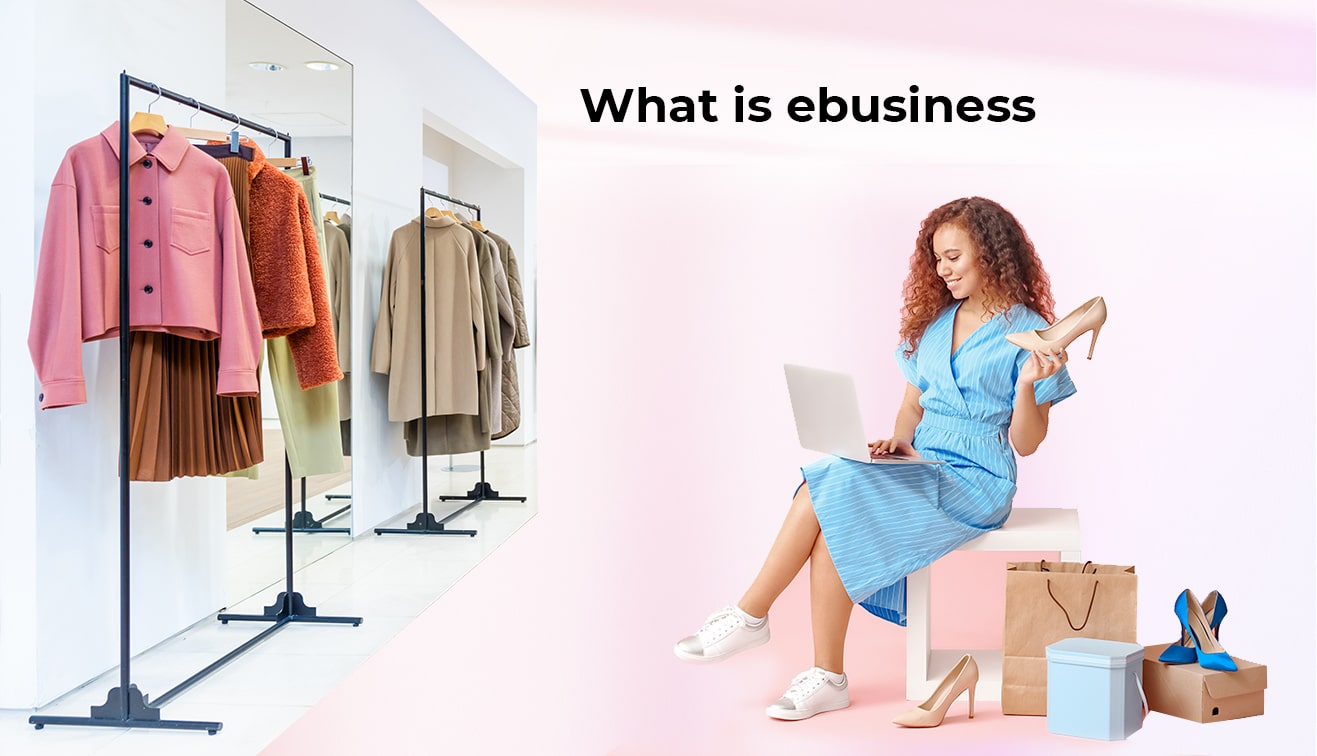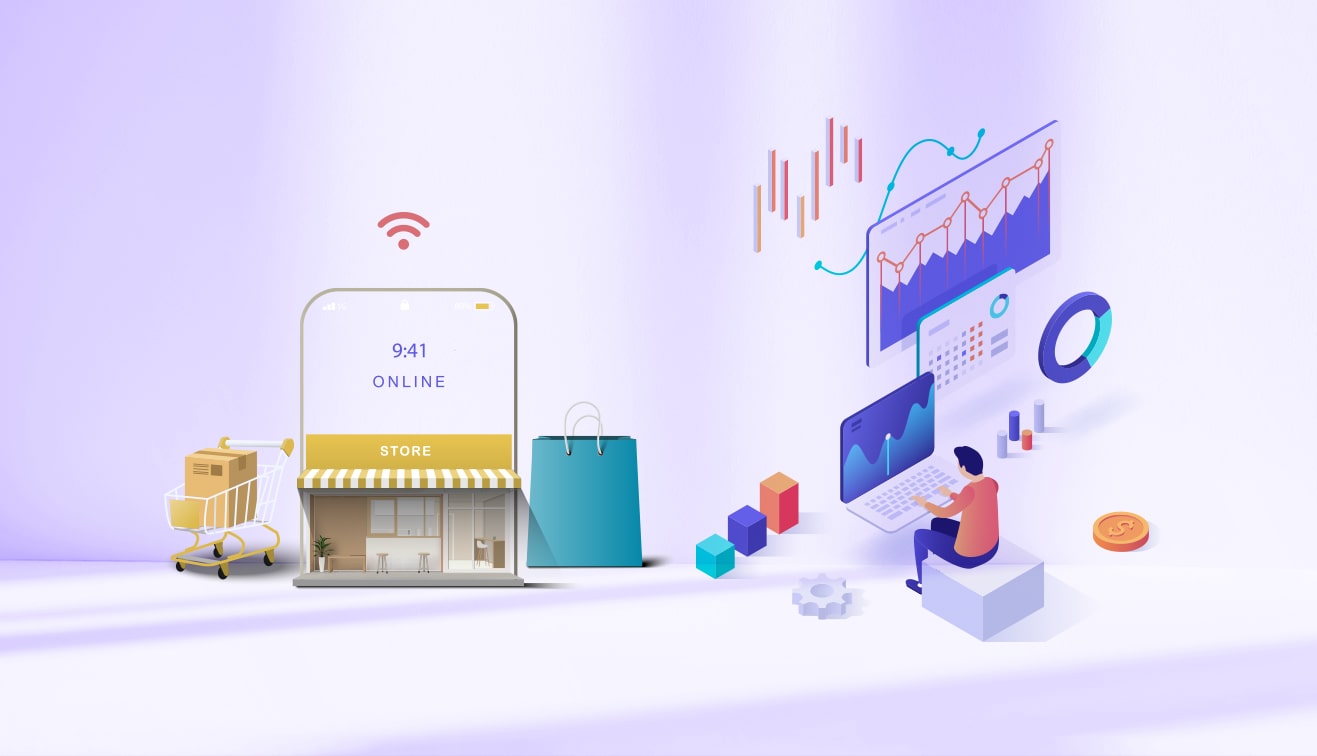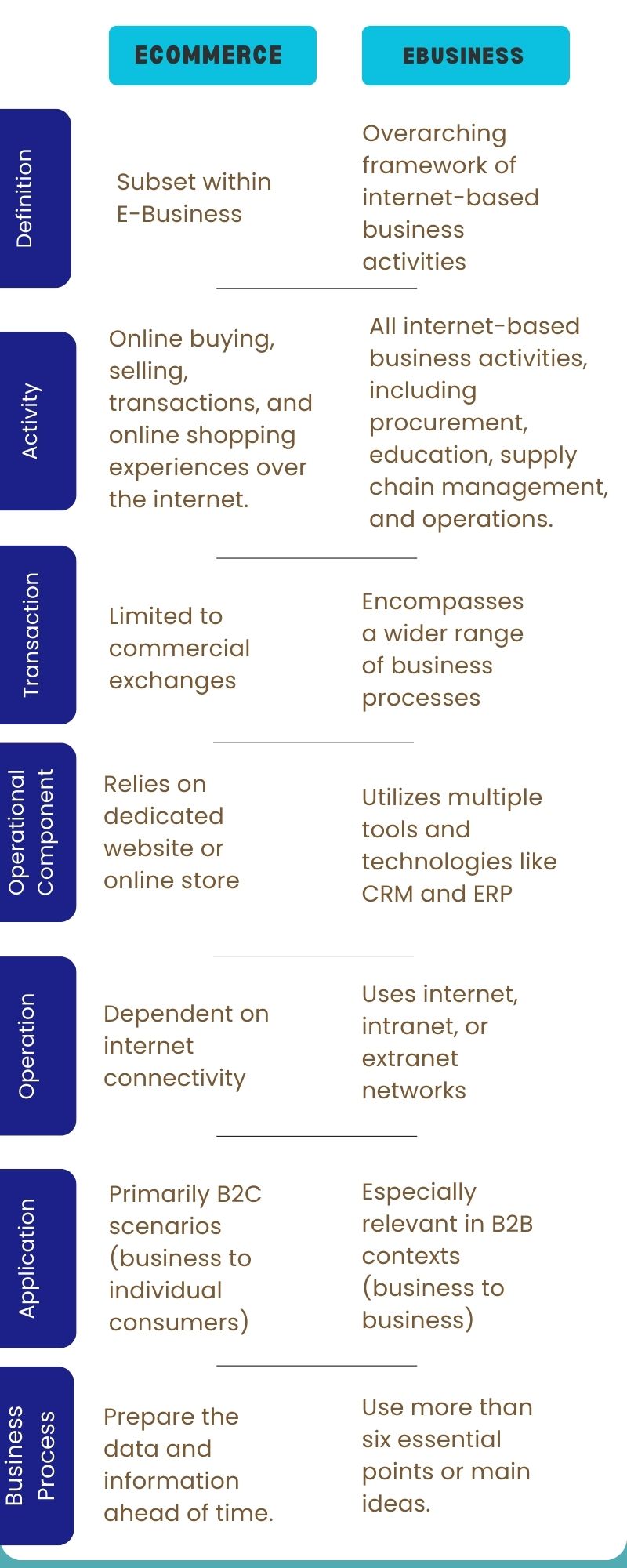Are you selling online?
Shopping for products and services online have taken the world by storm in the past decade. So, if you’re on the hunt for something, you don’t even have to walk all the way to a store to purchase it. With a simple click of a button, you can snap up anything you need, which is achievable thanks to eCommerce and eBusiness. Most think these terms are the same thing, when in fact, they’re completely different to one another.
What is e-commerce?
E-commerce, also known as electronic commerce, is the process that entails selling, buying, ordering, or paying for goods online. During this type of transaction, the seller can create a seamless transaction without face-to-face interaction. Not all e-commerce is the same, there are several types, some of which are easier than others.
E-commerce primarily deals with online buying and selling transactions, while e-business encompasses a broader spectrum.
Business to Business (B2B) – This digital e-commerce model entails businesses selling products or services to another business. An example of this could be a digital marketing agency selling marketing services to other companies.
Business to Consumer (B2C) – The business to consumer model is a little different as it involves businesses selling their goods or services to consumers. This is actually the most common type of e-commerce as it’s so widespread across the interconnected world. People tend to shop online more than traditional stores, and the likes of the COVID pandemic has substantially propelled this model due to simplicity, time efficiency and ease.
Consumer to Consumers (C2C) – The consumer-to-consumer model is a model in which all digital e-commerce is carried out between consumers. This is commonplace on the internet, which is generally seen occurring on Etsy, eBay, Facebook Marketplace and so on.
Consumer to Business (C2B) – This model entails individuals selling their goods to a business. A fine example of this is a digital influencer selling their services to their audiences. This is very popular now as the rise of the influencer has taken over the marketing paradigm and continues to fluctuate the way consumers decide on their purchasing phase.
As we have a continuously revolutionising business landscape, there are many more types of eCommerce that have been added to the list but more or less they are all somewhere a part of the above-mentioned types. They are:
- Business-to-Government (B2G)
- Government-to-Business (G2B)
- Mobile Commerce (M-commerce)
- Social Commerce
- Subscription Commerce
What is e-business?

On the other end of the spectrum, we have e-business, which is commonly referred to as electronic business. This type of business refers to the use of the web to conduct business. The facilitation of business through e-business utilises the power of the online world to enhance a business that also operates offline (a brick-and-mortar store).
There are two types of e-business, one being pure play and the other being brick and click.
Pure play – entails businesses focuses on a specific product or services as opposed to a multitude or the entire product offering. A good example of this is a collagen boosting company that sells just collagen drinks (assuming that they regularly make sales online and offline).
Bricks and clicks – this e-business type is the opposite of the above as it refers to businesses that operate both online and offline with a huge product offering and have both online and offline stores. With both hand-in-hand, the bricks and clicks model works well for a lot of companies, especially those you’d find on the high street that have been standing strong for years.
Wondering how both business models are so different? Buying and selling goods online is known as e-commerce, however with e-business, companies aren’t limited to simply buying and selling. They can operate offline as effectively as they do online.
Even if a business possesses an office with a physical presence and carries out their operations via the internet, this is still considered e-business. E-commerce requires full access to the internet to operate with their consumers, however e-business is much more than that. It can take advantage of the offline world as well as the intranet to connect with relevant parties.
Advantages of e-commerce and e-business

Both types have changed and switched up the way consumers interact and decide in their purchasing phase. Consumers first-hand know what the benefits are of both, but do you know what you can attain from them as the business owner?
As shown, both types aren’t actually in competition with each other. With e-commerce, you can keep costs down and reduce time spent in a brick-and-mortar store, focusing completely on online operations. By taking the business online, businesses can eliminate substantial costs.
The internet is available online 24 hours, 7 day a week, so if you’re looking to enhance your offline business with online technology, e-business would be ideal for you. With an e-business, you can operate offline when you want whilst operating online all the time. With both an e-business and the e-commerce types, both the customer and the business can reap many benefits. As mentioned, e-commerce is a massive part of e-business, and the same goes for e-commerce laying foundations for e-business despite it not necessarily being e-commerce.
Key Differences Between eCommerce and eBusiness

Understanding the difference between e-commerce and e-business is pivotal in today's digital landscape. E-commerce primarily deals with online buying and selling transactions, while e-business encompasses a broader spectrum, including supply chain management, customer education, and internal processes. This distinction guides businesses in making strategic decisions, allocating resources efficiently, and delivering tailored customer experiences. By grasping these nuances, businesses can gain a competitive edge, adapt to evolving market dynamics, and ensure long-term sustainability in the digital realm.




.png)









_ Why do you need one.png?h=250&fm=webp)



























































.png?h=250&fm=webp)
 copy.png?h=250&fm=webp)





.jpg?h=250&fm=webp)






.jpg?h=250&fm=webp)

.png?h=250&fm=webp)


.png?h=250&fm=webp)

.jpg?h=250&fm=webp)







.jpg?h=250&fm=webp)










.png?h=250&fm=webp)




































































.png?h=250&fm=webp)



.png?h=250&fm=webp)



.png?h=250&fm=webp)
.png?h=250&fm=webp)



.png?h=250&fm=webp)
.png?h=250&fm=webp)
.png?h=250&fm=webp)

.png?h=250&fm=webp)
.png?h=250&fm=webp)
.png?h=250&fm=webp)

.png?h=250&fm=webp)



















































































